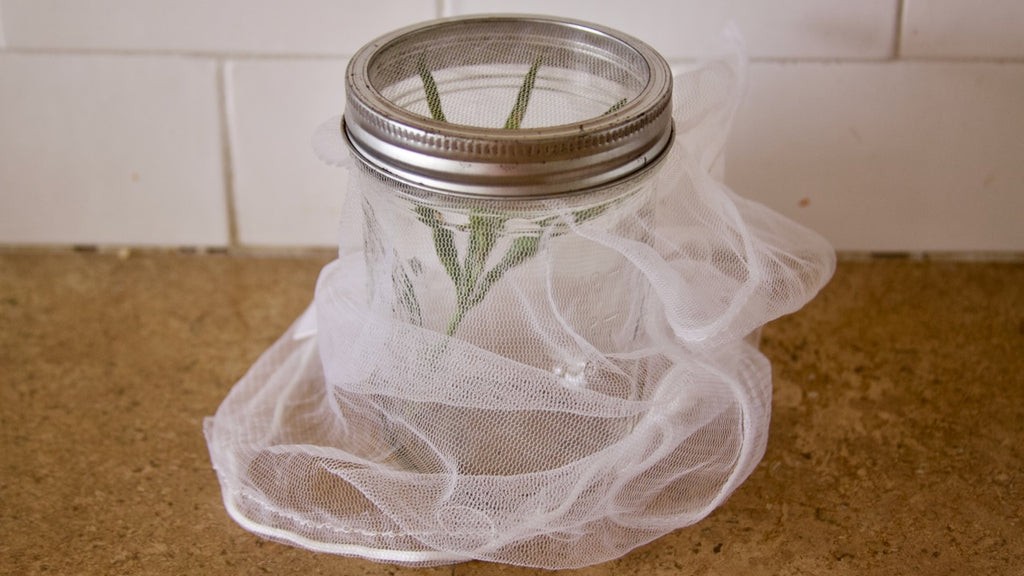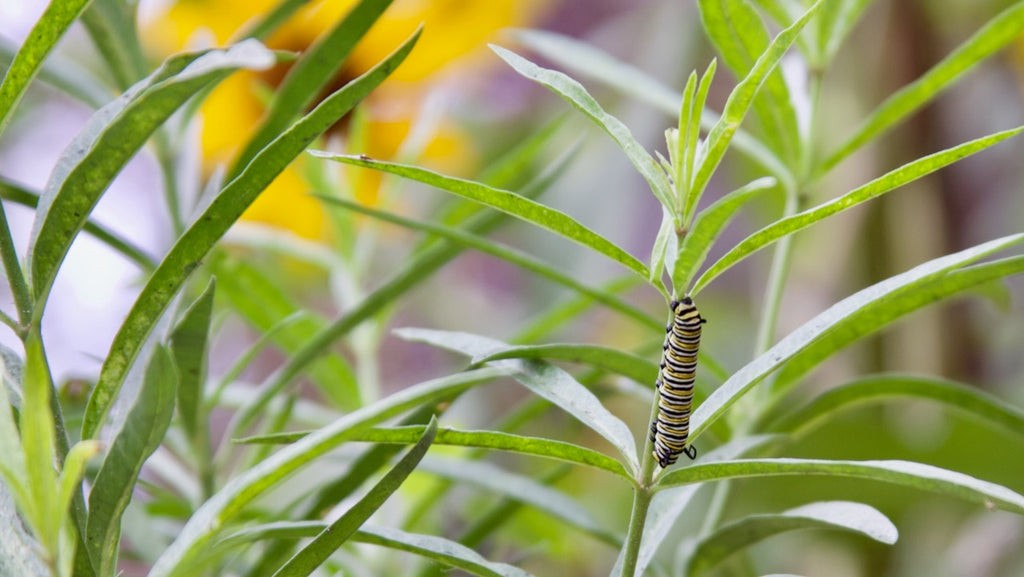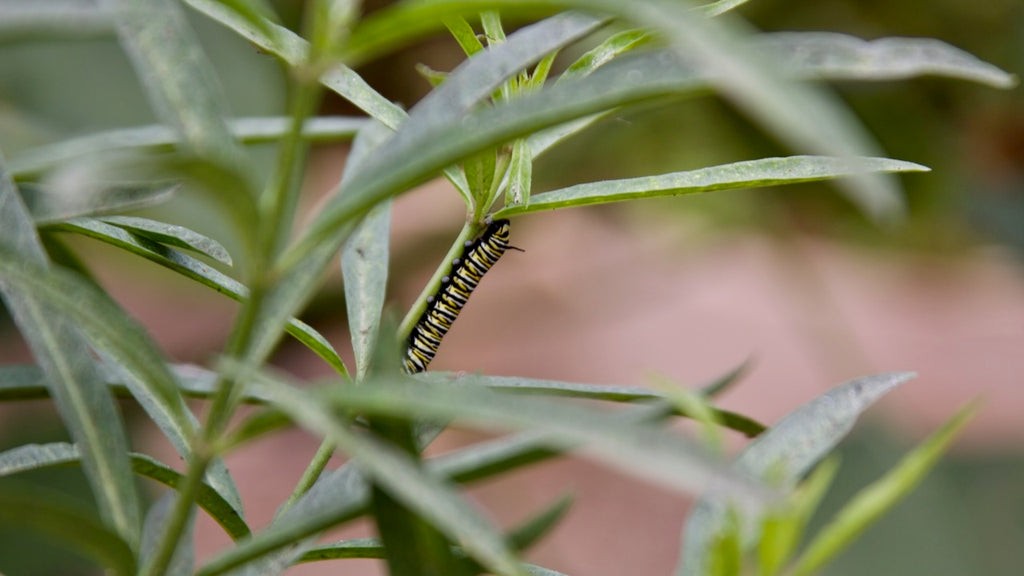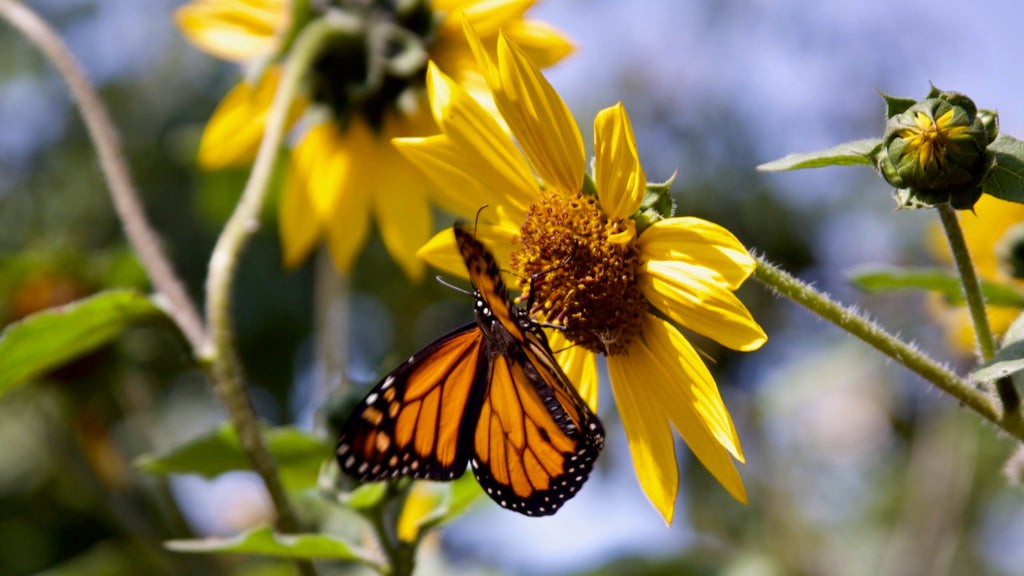Taking care of a caterpillar can be a rewarding experience, offering a glimpse into the fascinating world of metamorphosis. At CARS.EDU.VN, we provide detailed guides and expert tips to ensure your caterpillar thrives and transforms into a beautiful butterfly. Explore our site for more insights into lepidopteran care and butterfly gardening.
1. Understanding Caterpillar Basics
Before you embark on your caterpillar care journey, it’s essential to understand the basics of these fascinating creatures. Knowing their specific needs will help you provide the best possible environment for their growth and transformation. Let’s delve into the fundamental aspects of caterpillar care.
1.1 Identifying Your Caterpillar
The first step in providing proper care is to identify the type of caterpillar you have. Different species have different dietary needs and environmental preferences. Here’s a quick guide to help you get started:
- Monarch Caterpillars: These are easily recognizable by their black, yellow, and white stripes. They exclusively feed on milkweed.
- Swallowtail Caterpillars: These come in various colors and patterns, often with false eyespots to deter predators. Their host plants vary but often include dill, parsley, and fennel.
- Cabbage White Caterpillars: These are green and blend in with brassica plants like cabbage, broccoli, and kale.
If you’re unsure about the species, take a picture and compare it to online resources or consult a local butterfly expert. Identifying the caterpillar correctly will ensure you provide the right food and care. According to the University of Florida’s Entomology and Nematology Department, proper identification is crucial for successful caterpillar rearing (University of Florida Entomology).
1.2 Understanding Caterpillar Life Cycle
Caterpillars go through several stages of development, each with unique needs:
- Egg Stage: This is the beginning of the life cycle. Eggs are laid on specific host plants by the adult butterfly.
- Larval Stage (Caterpillar): This is the feeding and growing stage. The caterpillar molts its skin several times as it grows larger.
- Pupal Stage (Chrysalis): The caterpillar transforms into a pupa, forming a protective shell called a chrysalis.
- Adult Stage (Butterfly): The butterfly emerges from the chrysalis, ready to reproduce and start the cycle anew.
Understanding these stages helps you anticipate the needs of your caterpillar and provide the right care at each phase.
1.3 Essential Supplies for Caterpillar Care
To ensure your caterpillar thrives, you’ll need a few essential supplies:
- Enclosure: A mesh cage, glass jar with ventilation, or plastic container with air holes will work. The size should be appropriate for the size of the caterpillar and the amount of food you’ll be providing.
- Host Plant: This is the specific plant that the caterpillar eats. Make sure you have a fresh supply of the correct host plant.
- Water Source: Caterpillars get most of their moisture from their food, but a small, shallow dish with a wet paper towel can provide additional hydration.
- Substrate: Paper towels or newspaper can be used to line the bottom of the enclosure for easy cleaning.
- Spray Bottle: Use this to mist the enclosure lightly to maintain humidity.
Having these supplies on hand will make caring for your caterpillar much easier and more enjoyable.
2. Setting Up the Ideal Caterpillar Habitat
Creating the right habitat is crucial for the health and well-being of your caterpillar. A well-maintained habitat mimics the caterpillar’s natural environment and provides everything it needs to thrive. Let’s explore the key elements of setting up the perfect caterpillar habitat.
2.1 Choosing the Right Enclosure
The enclosure you choose should be safe, secure, and well-ventilated. Here are a few options:
| Enclosure Type | Pros | Cons |
|---|---|---|
| Mesh Cage | Excellent ventilation, easy to observe caterpillars | Can be difficult to clean, may not retain humidity well |
| Glass Jar | Easy to clean, good for observing caterpillars | Limited ventilation, can overheat in direct sunlight |
| Plastic Container | Lightweight, inexpensive, easy to clean | May require additional ventilation, can become too humid if not managed |




Regardless of the type of enclosure you choose, make sure it is large enough to accommodate the caterpillar and its food source.
2.2 Providing Proper Ventilation
Ventilation is essential to prevent the buildup of mold and bacteria in the enclosure. If using a jar or plastic container, make sure to create air holes in the lid. A mesh cage naturally provides excellent ventilation. According to the Butterfly Conservation Society, good ventilation is crucial for preventing diseases in caterpillars (Butterfly Conservation Society).
2.3 Maintaining the Right Humidity
Caterpillars need a certain level of humidity to thrive. You can maintain the right humidity by misting the enclosure lightly with water. Avoid over-misting, as this can lead to the growth of mold and bacteria. A good rule of thumb is to mist the enclosure once or twice a day, or as needed to keep the leaves of the host plant fresh.
2.4 Cleaning the Habitat Regularly
Caterpillars produce a lot of waste, so it’s important to clean the habitat regularly. Remove frass (caterpillar poop) and any uneaten food daily. Replace the substrate (paper towels or newspaper) as needed to keep the enclosure clean and hygienic. According to a study by the Entomological Society of America, maintaining a clean habitat is essential for preventing diseases in caterpillars (Entomological Society of America).
3. Feeding Your Caterpillar Correctly
Providing the right food is essential for the growth and development of your caterpillar. Caterpillars are very specific about what they eat, so it’s important to know the host plant for your particular species. Let’s explore the key aspects of feeding your caterpillar correctly.
3.1 Identifying the Host Plant
The host plant is the specific plant that the caterpillar eats. Different species of caterpillars have different host plants. For example, Monarch caterpillars eat milkweed, while Swallowtail caterpillars eat dill, parsley, and fennel. If you’re unsure about the host plant for your caterpillar, consult a field guide or online resource.
3.2 Providing Fresh Host Plant
Caterpillars need a constant supply of fresh host plant to eat. Replace the host plant daily, or as needed to keep it fresh. If you’re using a water source to keep the host plant fresh, make sure the water is covered to prevent the caterpillar from drowning. You can cover the water with a lid with small holes, or with plastic wrap secured with a rubber band.
3.3 Avoiding Pesticides and Herbicides
Never feed your caterpillar host plants that have been treated with pesticides or herbicides. These chemicals can be harmful to caterpillars and can even kill them. Always use organic host plants, or grow your own to ensure they are safe for your caterpillar.
3.4 Offering Variety (If Applicable)
Some caterpillars will eat a variety of host plants. If you know that your caterpillar is one of these species, you can offer it a variety of different plants to see which ones it prefers. This can help you provide a more balanced diet for your caterpillar.
4. Monitoring Caterpillar Health and Growth
Regular monitoring of your caterpillar’s health and growth is essential for ensuring it thrives. By observing its behavior and physical appearance, you can identify potential problems early and take corrective action. Let’s explore the key aspects of monitoring caterpillar health and growth.
4.1 Observing Caterpillar Behavior
Pay attention to your caterpillar’s behavior. Is it eating regularly? Is it moving around and exploring its enclosure? Is it molting its skin? Changes in behavior can be an early sign of illness or stress.
4.2 Checking for Signs of Illness
Look for signs of illness, such as:
- Lethargy: Is the caterpillar unusually inactive or sluggish?
- Discoloration: Are there any unusual spots or discoloration on the caterpillar’s skin?
- Diarrhea: Is the caterpillar producing watery or discolored frass?
- Loss of Appetite: Is the caterpillar refusing to eat?
If you notice any of these signs, isolate the caterpillar from others and consult a butterfly expert or veterinarian.
4.3 Monitoring Growth and Molting
Caterpillars grow rapidly and molt their skin several times as they develop. Molting is a normal process, but it can be stressful for the caterpillar. Make sure the enclosure is humid enough to help the caterpillar shed its skin easily. If the caterpillar is having trouble molting, you can gently mist it with water to help loosen the skin.
4.4 Addressing Common Caterpillar Problems
Here are some common problems that can affect caterpillars, and how to address them:
| Problem | Solution |
|---|---|
| Dehydration | Mist the enclosure regularly and provide fresh, moist host plant. |
| Disease | Isolate the affected caterpillar and consult a butterfly expert or veterinarian. Maintain a clean and well-ventilated enclosure to prevent disease. |
| Parasites | Remove any visible parasites and consult a butterfly expert or veterinarian. |
| Improper Host Plant | Ensure you are providing the correct host plant for your caterpillar species. |
By monitoring your caterpillar’s health and growth, you can ensure it has the best possible chance of transforming into a healthy butterfly.
5. Preparing for Pupation and Butterfly Emergence
As your caterpillar grows, it will eventually enter the pupal stage and transform into a butterfly. Preparing for this stage is essential for ensuring a successful transformation. Let’s explore the key aspects of preparing for pupation and butterfly emergence.
5.1 Recognizing Signs of Pupation
As your caterpillar gets ready to pupate, it will exhibit certain behaviors, such as:
- Wandering: The caterpillar will start to wander around its enclosure, looking for a suitable place to pupate.
- Hanging Upside Down: The caterpillar will often hang upside down from a branch or the top of the enclosure.
- Forming a Chrysalis: The caterpillar will shed its skin one last time and form a chrysalis, a hard, protective shell.
5.2 Creating a Suitable Pupation Site
Provide a suitable pupation site for your caterpillar. This could be a branch, a twig, or the top of the enclosure. Make sure the site is secure and won’t be disturbed.
5.3 Maintaining Humidity During Pupation
Maintain a consistent level of humidity during pupation. This will help prevent the chrysalis from drying out. Mist the enclosure regularly, but avoid over-misting.
5.4 Preparing for Butterfly Emergence
Once the butterfly emerges from the chrysalis, it will need space to stretch its wings. Make sure the enclosure is large enough to accommodate the butterfly and has a rough surface for it to grip.
5.5 Releasing the Butterfly
Once the butterfly has fully stretched its wings and is ready to fly, you can release it into its natural habitat. Choose a warm, sunny day to release the butterfly. Avoid releasing butterflies in areas that have been treated with pesticides or herbicides. According to the U.S. Fish and Wildlife Service, releasing butterflies into suitable habitats is essential for their conservation (U.S. Fish and Wildlife Service).
6. Understanding Different Types of Caterpillars
Caterpillars come in a wide variety of shapes, sizes, and colors. Understanding the different types of caterpillars can help you provide the best possible care for your specific species. Let’s explore some of the most common types of caterpillars.
6.1 Monarch Caterpillars
Monarch caterpillars are one of the most recognizable types of caterpillars. They are black, yellow, and white striped and feed exclusively on milkweed. Monarch butterflies are known for their long-distance migration, and their caterpillars play a crucial role in this journey.
6.2 Swallowtail Caterpillars
Swallowtail caterpillars come in a variety of colors and patterns, often with false eyespots to deter predators. Their host plants vary but often include dill, parsley, and fennel. Swallowtail butterflies are known for their beautiful, intricate wing patterns.
6.3 Cabbage White Caterpillars
Cabbage white caterpillars are green and blend in with brassica plants like cabbage, broccoli, and kale. They can be a pest in gardens, but they are also an important part of the ecosystem. Cabbage white butterflies are common in gardens and fields throughout North America.
6.4 Woolly Bear Caterpillars
Woolly bear caterpillars are fuzzy and brown or black. They are known for their ability to survive cold temperatures and are often seen in the fall. Woolly bear caterpillars feed on a variety of plants, including grasses and weeds.
6.5 Tent Caterpillars
Tent caterpillars are social caterpillars that build silken tents in trees. They can defoliate trees, but they are also an important food source for birds and other animals. Tent caterpillars feed on a variety of trees, including cherry, apple, and oak.
7. Caterpillar Conservation Efforts
Many species of caterpillars and butterflies are facing threats from habitat loss, pesticide use, and climate change. By taking steps to conserve caterpillars and butterflies, you can help protect these important creatures for future generations. Let’s explore some caterpillar conservation efforts.
7.1 Planting Host Plants
One of the best ways to help caterpillars is to plant their host plants in your garden. This provides them with a food source and a place to lay their eggs. When planting host plants, make sure to use organic plants that have not been treated with pesticides or herbicides.
7.2 Avoiding Pesticides and Herbicides
Pesticides and herbicides can be harmful to caterpillars and other beneficial insects. Avoid using these chemicals in your garden, or use them sparingly and selectively. Consider using natural pest control methods, such as introducing beneficial insects or using organic pesticides.
7.3 Creating Butterfly Gardens
Butterfly gardens provide a habitat for caterpillars and butterflies. These gardens include host plants, nectar plants, and a water source. Butterfly gardens can be a beautiful and educational addition to any landscape.
7.4 Supporting Conservation Organizations
Many organizations are working to conserve caterpillars and butterflies. Consider supporting these organizations through donations or volunteer work. Some of the leading butterfly conservation organizations include the Xerces Society and the Butterfly Conservation Society.
8. Navigating Legal and Ethical Considerations
Raising caterpillars involves more than just providing food and shelter; it also requires understanding the legal and ethical implications of your actions. This is particularly important when dealing with species that may be endangered or protected. Let’s explore these considerations to ensure you’re acting responsibly.
8.1. Understanding Local Regulations
Before you start raising caterpillars, research the local regulations in your area. Some species may be protected, and it could be illegal to collect them from the wild or raise them in captivity without the proper permits.
8.2. Ethical Collection Practices
If collecting caterpillars from the wild is permitted, do so responsibly. Only take a few caterpillars from a large population to avoid impacting the local ecosystem. Never collect caterpillars from areas where they are scarce or endangered.
8.3. Avoiding Overcrowding
When raising caterpillars in captivity, avoid overcrowding. Overcrowding can lead to stress, disease, and poor growth. Provide enough space for each caterpillar to move around and feed comfortably.
8.4. Proper Disposal of Waste
Dispose of caterpillar waste properly to prevent the spread of diseases. Compost the waste if possible, or dispose of it in a sealed bag in the trash. Avoid dumping caterpillar waste in natural areas, as this can introduce foreign pathogens.
8.5. Releasing Butterflies Responsibly
When releasing butterflies into the wild, choose a suitable habitat that is free from pesticides and has an ample supply of nectar plants. Avoid releasing butterflies in areas where they are not native, as this can disrupt the local ecosystem.
9. Troubleshooting Common Issues
Even with the best care, you may encounter some common issues when raising caterpillars. Knowing how to troubleshoot these issues can help you keep your caterpillars healthy and thriving. Let’s explore some common problems and their solutions.
9.1. Caterpillars Not Eating
If your caterpillars are not eating, there could be several reasons:
- Incorrect Host Plant: Make sure you are providing the correct host plant for your caterpillar species.
- Pesticides: Ensure the host plant is free from pesticides.
- Disease: Check for signs of disease, such as lethargy or discoloration.
- Molting: Caterpillars often stop eating before molting.
9.2. Caterpillars Dying
If your caterpillars are dying, there could be several reasons:
- Disease: Isolate the affected caterpillars and consult a butterfly expert or veterinarian.
- Pesticides: Ensure the host plant is free from pesticides.
- Overcrowding: Provide enough space for each caterpillar.
- Poor Ventilation: Ensure the enclosure is well-ventilated.
9.3. Chrysalis Problems
If you are having problems with the chrysalis, such as it falling or drying out, try the following:
- Secure the Chrysalis: If the chrysalis falls, you can secure it to a branch or the top of the enclosure using a small amount of glue or tape.
- Maintain Humidity: Ensure the enclosure is humid enough to prevent the chrysalis from drying out.
- Avoid Disturbing: Avoid disturbing the chrysalis during the pupation process.
9.4. Butterfly Emergence Issues
If the butterfly is having trouble emerging from the chrysalis, try the following:
- Increase Humidity: Increase the humidity in the enclosure to help the butterfly emerge more easily.
- Provide a Rough Surface: Ensure the enclosure has a rough surface for the butterfly to grip as it emerges.
- Avoid Assisting: Avoid assisting the butterfly in emerging from the chrysalis, as this can damage its wings.
10. Advanced Caterpillar Care Techniques
For those who want to take their caterpillar care to the next level, there are several advanced techniques you can use to enhance the health and well-being of your caterpillars. Let’s explore some of these techniques.
10.1. Raising Caterpillars Indoors vs. Outdoors
Raising caterpillars indoors and outdoors both have their advantages and disadvantages. Indoors, you have more control over the environment and can protect the caterpillars from predators and harsh weather. Outdoors, the caterpillars have access to natural sunlight and fresh air.
10.2. Controlling Temperature and Humidity
Maintaining the correct temperature and humidity is essential for caterpillar health. You can use a thermometer and hygrometer to monitor the temperature and humidity in the enclosure. Use a humidifier or mister to increase humidity, and a heater or cooler to adjust the temperature.
10.3. Providing Supplemental Nutrients
Some caterpillars may benefit from supplemental nutrients, such as vitamins and minerals. You can provide these nutrients by adding them to the host plant or by offering a supplemental food source.
10.4. Preventing and Treating Diseases
Preventing and treating diseases is essential for maintaining a healthy caterpillar population. You can prevent diseases by maintaining a clean and well-ventilated enclosure, and by isolating any sick caterpillars. If a caterpillar becomes sick, consult a butterfly expert or veterinarian for treatment options.
10.5. Breeding Butterflies
Breeding butterflies can be a rewarding experience, but it also requires a lot of knowledge and effort. You will need to provide a suitable environment for the butterflies to mate and lay eggs, and you will need to care for the eggs and caterpillars.
FAQ About Caterpillar Care
-
What do caterpillars eat?
Caterpillars eat the leaves of specific host plants. The type of host plant depends on the species of caterpillar.
-
How often should I clean the caterpillar enclosure?
You should clean the caterpillar enclosure daily, removing frass and uneaten food.
-
How do I know if my caterpillar is sick?
Signs of illness include lethargy, discoloration, and loss of appetite.
-
How long does it take for a caterpillar to turn into a butterfly?
The time it takes for a caterpillar to turn into a butterfly varies depending on the species, but it typically takes several weeks.
-
What should I do if the chrysalis falls?
You can secure the chrysalis to a branch or the top of the enclosure using a small amount of glue or tape.
-
How do I release the butterfly?
Release the butterfly on a warm, sunny day in a suitable habitat that is free from pesticides.
-
What is frass?
Frass is caterpillar poop.
-
How can I attract butterflies to my garden?
You can attract butterflies to your garden by planting host plants and nectar plants.
-
Are caterpillars harmful to humans?
Most caterpillars are not harmful to humans, but some species have stinging hairs that can cause skin irritation.
-
Where can I learn more about caterpillar care?
You can learn more about caterpillar care at CARS.EDU.VN, where we provide detailed guides and expert tips to ensure your caterpillar thrives.
Discover More at CARS.EDU.VN
Taking care of a caterpillar can be a truly enriching experience, offering insights into nature’s wonders. However, just as with any living creature, challenges can arise. Are you finding it difficult to identify the correct host plant, struggling with maintaining the ideal habitat conditions, or simply seeking more in-depth knowledge on caterpillar health?
At CARS.EDU.VN, we understand these challenges and are here to provide you with the expertise and resources you need. From detailed guides on identifying different caterpillar species to troubleshooting common issues, our website is your go-to source for all things lepidopteran.
Don’t let uncertainty hinder your caterpillar care journey. Visit cars.edu.vn today to explore our comprehensive collection of articles, expert tips, and community forums. Let us help you create the perfect environment for your caterpillar to thrive and transform into a beautiful butterfly.
For further assistance, contact us at 456 Auto Drive, Anytown, CA 90210, United States, or reach out via WhatsApp at +1 555-123-4567.